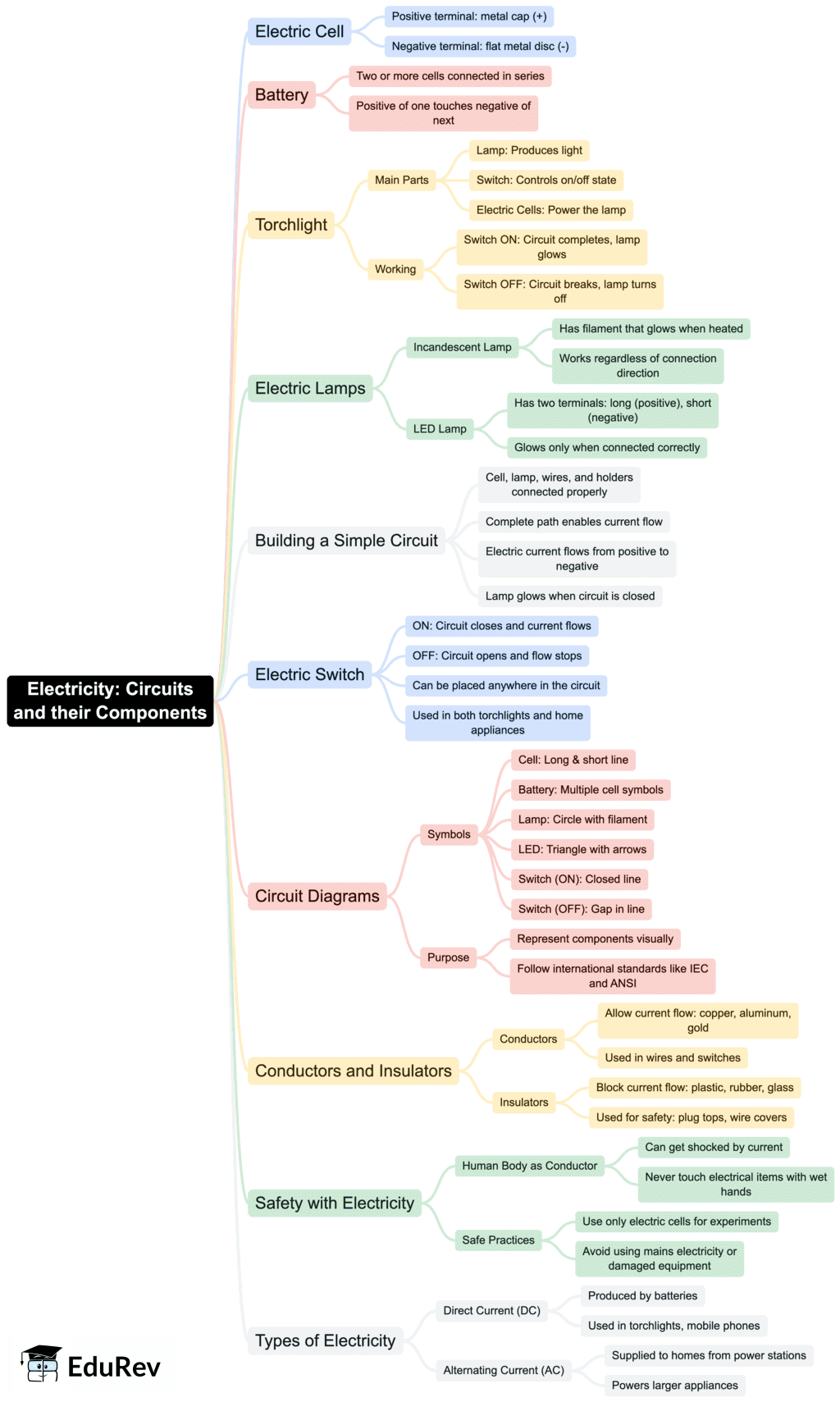Class 7 Exam > Class 7 Notes > Science Olympiad Class 7 > Mind Map: Electricity: Circuits and their Components
Class 7 Science Chapter 3 Mindmap - Electricity: Circuits and their Components

The document Class 7 Science Chapter 3 Mindmap - Electricity: Circuits and their Components is a part of the Class 7 Course Science Olympiad Class 7.
All you need of Class 7 at this link: Class 7
|
49 videos|125 docs|45 tests
|
FAQs on Class 7 Science Chapter 3 Mindmap - Electricity: Circuits and their Components
| 1. What is an electric circuit? |  |
Ans. An electric circuit is a closed path through which electric current flows. It consists of various components such as a power source (like a battery), conductors (wires), and devices (like bulbs, switches, etc.) that use electricity. The circuit must be complete for the current to flow.
| 2. What are the main components of a circuit? |  |
Ans. The main components of a circuit include:
1. Power source (e.g., battery or generator) - provides the energy.
2. Conductors (wires) - allow the current to flow.
3. Load (e.g., bulbs, motors) - uses the electrical energy.
4. Switch - controls the flow of current by opening or closing the circuit.
| 3. What is the difference between series and parallel circuits? |  |
Ans. In a series circuit, all components are connected one after another, forming a single pathway for the current to flow. If one component fails, the entire circuit stops working. In a parallel circuit, components are connected across common points or junctions, providing multiple pathways for current. If one component fails, the others can still function.
| 4. How does a switch work in a circuit? |  |
Ans. A switch is a device that can open or close a circuit. When the switch is in the "off" position, it breaks the circuit, stopping the flow of current. When it is in the "on" position, it completes the circuit, allowing current to flow through and power devices like bulbs.
| 5. Why are conductors and insulators important in circuits? |  |
Ans. Conductors are materials that allow electric current to flow easily (e.g., copper, aluminum), which are essential for connecting components in a circuit. Insulators, on the other hand, prevent the flow of electricity (e.g., rubber, plastic) and are important for safety, as they protect us from electric shock and ensure that the current flows only where it is intended.
Related Searches

















